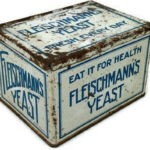The 1925 Chevrolet was truly “new”
in every sense of the word but this advertisement
just said that “It’s so Easy to Drive”

Not a word about newness or improvements
yet major parts of the car had been redesigned
Here are changes presented—at the time—as “new” in a Chevrolet publication titled A Mechanical Demonstration of the NEW FEATURES:
“New rustless airplane radiator shell—new improvements in the famous Chevrolet motor—new chassis with all moving parts enclosed—new dry single plate disc clutch, completely enclosed with flywheel—new stronger front axle—new banjo-type rear axle construction, such as is found on the highest priced cars—new longer and stronger frame with five sturdy steel cross member—new semi-elliptic springs, made of the finest chrome vanadium steel, with reas springs underslung—new fore-and-aft steering mechanism—new bodies with latest Fisher improvements on closed cars—new durable Duco finish in beautiful colors.”
The publication sets out every new feature with detailed descriptions, specifications and hand-drawn illustrations but the advertisement only says that the 1925 Chevrolet is so easy to drive because it was “improved” and “modern”.
It was a significant improvement over the prior year.
Concept Cars, an automotive website for enthusiast seeking vehicle information notes: “It still rode on a 103-inch wheelbase but was now powered by an improved powerplant. The 171 cubic-inch four-cylinder engine produced 26 horsepower and was mated to a manual gearbox. The gearbox had also been updated with a new single dry plate clutch replacing the old cone clutch style. The ride and handling was vastly improved by the removal of quarter-elliptic rear springs with semi-elliptic springs. The brakes measured 11-inches in diameter and operated on the rear wheels.”
Everybody says – “It’s so easy to drive” the 1925 Chevrolet…
not that the 1925 model was new. Was it more important to say that the car could be controlled with remarkable ease, and that the steering mechanism “makes it easy and safe…to hold the car on the road…for hours at a time in perfect comfort”; that “the elliptical springs…will delight you?”
The Chevrolet Motor Car Company was incorporated by Louis Chevrolet, a race car driver, and William “Billy” Durant, founder of General Motors on November 3, 1911. At the time Durant wasn’t with GM; he had been ousted in 1910 because of a financial crisis for which he was probably accountable.
One year after the Chevrolet Motor Car Company was established, the first car to bear the name—a thoroughly contemporary, powerful and luxurious car—rolled out of a pilot factory in Detroit.

A 1912 Chevrolet Classic Six, with Louis Chevrolet in the white coat. PHOTO: GENERAL MOTORS
In 1913 Chevrolet introduced the Type C Six priced at $2,100. That was the kind of car that Louis Chevrolet wanted. Durant, however, envisioned the Chevrolet motor car as an inexpensive car that would offer significantly more value than the volume leader of the period, Ford’s Model T, prized for its low cost, durability, versatility, and ease of maintenance.
The Model T was practical and affordable transportation that sold for only $850 in 1908 and that was dropping in price because of Henry Ford’s success with assembly line production. By 1925 the Model T sold for less than $300.
You could buy the 1925 Chevrolet for as little as $510 f.o.b Flint, Michigan: the Landau cost $765. In today’s dollars the advertised price of $645 for the Coach would be $9,426.40 calculated on a cumulative rate of inflation of 1361.5 per cent.

A skilled artist’s illustration in the advertisement heading this post, is that of the mid-priced $645 Coach model.
To portray the key selling point that the car was easy to drive, the artist drew the automobile travelling on something less than a superhighway. It seems to be a very rugged road. The Chevrolet, the reader learns, is remarkably easy to control “over rough roads, or smooth, over ruts or slippery pavement.”
The average earnings in 1925 were 72.3 cents an hour and workers averaged 50 hours per week. So the Chevrolet in 1925 cost less than half a year’s earnings.










